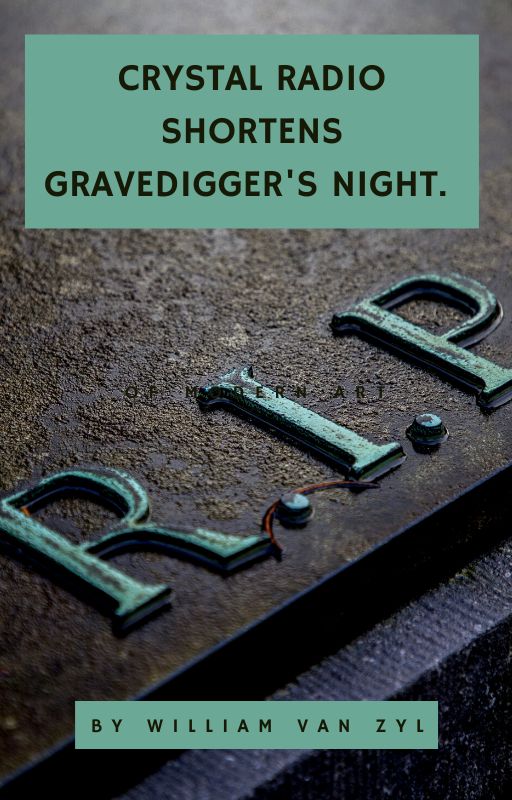
Table of Contents
By William Van Zyl – Published June 2022.
*Listen to the podcast while reading: https://www.podbean.com/ew/pb-e78d4-124aaff
“At the sound of the gong, it will be exactly 1 am on 2ZC radio.”
“B-O-I-I-I-N-G”
“You are listening to the music selected by Dave – Dave Marney,” announced the broadcaster.
“Our next song is a song that goes with the hour. Grandpa’s Grave, by Peter Sellers.”
It is just after 1 am on a cold winter’s night in Havelock North, New Zealand.
Somewhere in a dark trench, a dome-of-light lights up the surrounding trees. The white light reflects onto the trees providing a dim glow. It sprinkles the tombstones with sinister dappled light. The black leaves rustle and dance in the cool morning wind.
There is no Moon.
The Gravedigger lifts his headlight and wipes the sweat off his brow. He then fiddles with the earpiece of his crystal radio. He is adjusting his earpiece with his dirty hand. He leaves a line of sand and sweat on his ear. He sniffs. Then, releases a piercing cough. The ice-cold cold metal shovel goes back to work. It scrapes –and–lifts, scrapes–and–lifts. The small mountain of soil grows slowly. Deep inside the short deep trench, a battery-powered torch lights up the face and head of the digger. A small mound of dirt lays dead-still next to the grave. The gravedigger is wired-up for the long cold night.
The grave is fresh.
It is the 1-st of July 1969. Havelock North, New Zealand.
The Havelock cemetery is alive. An AM station, Radio 2ZC, hosted by Dave Marney, blares into the ear of Joe Higgins, the local contractor. He digs for a living. The AM station breaks the shovel scraping and the pick’s thumping monotony. Joe is alive; he is on his favourite station.
——0——-
Somewhere, about 300 Km away, a young teenage boy is listening to the same station. His head is covered with his blanket. The earpiece sits snug in his ear.
‘If the teachers find out he is listening to his crystal radio set in bed – at this time of night – there will be hell to play.’
Radios are banned in the dormitory. John’s mind is drifting away; he waits for his favourite song. Sugar, Sugar by the Archies – released 1969.
——0——–
Somewhere in South Africa, it is just after 1 pm.
“You are listening to Radio Lorenzo Marques,” said the broadcaster.”
“It is time for our Top Twenty Chart Show — the LM Hit Parade!”
William is excited. He sits in front of his radiogram and fine-tunes the station to get the best possible signal.
He can’t wait to hear the top 10 songs on the hit parade. His favourite song, Stayin’ Alive by the Bee Gees, will soon be on parade.
——-0——-
The three scenarios I have sketched play off in 3 different locations – the first two in New Zealand and the last one in South Africa. During the 1960s and 1970s, teenagers loved AM radio. Specifically listening to their favourite music. I have spoken to a friend, and he has shared his experiences of having a crystal radio in the dormitory at school in New Zealand. You will not believe it, recently I visited him at his home, and we discussed his crystal set, and he went to his bedroom and returned with that same soap-container crystal radio of almost fifty years ago. The aerial and the earpiece were missing. However, the essential parts of the crystal radio were all intact. I share those authentic pictures of the crystal set with you. It is a unique story by John of his childhood. See the exciting photos below in this blog post.
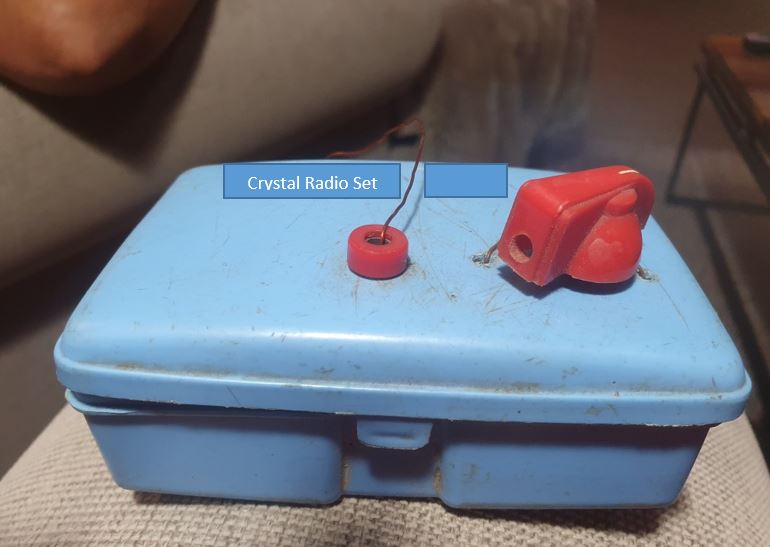
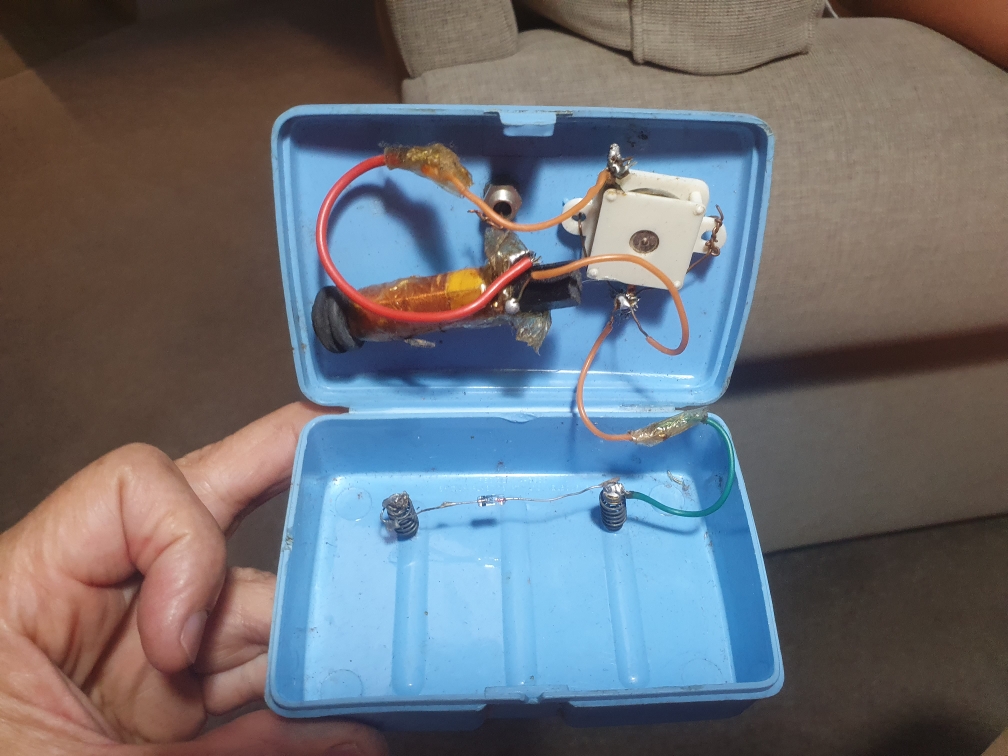
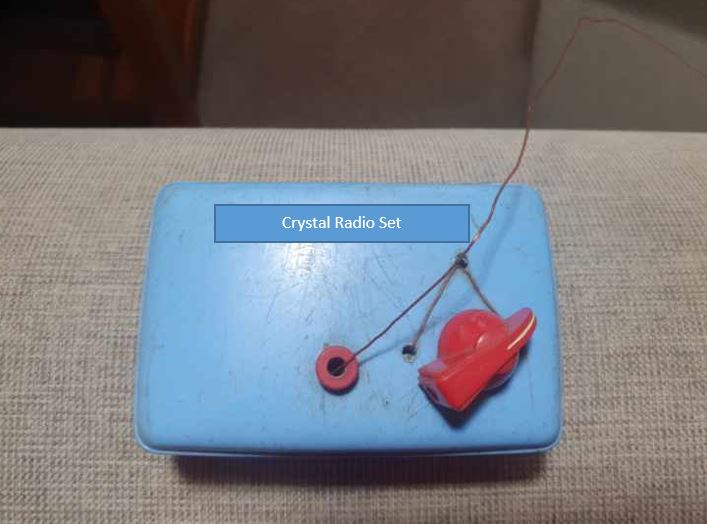
I have a close-up of a typical crystal for you. See the image below.
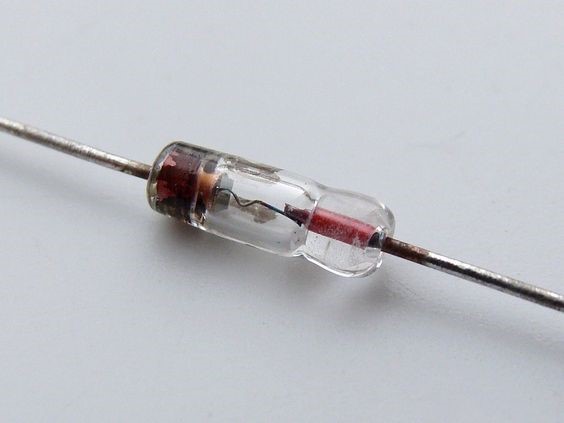
I include a simple DIY crystal radio set. See the schematic diagram below.
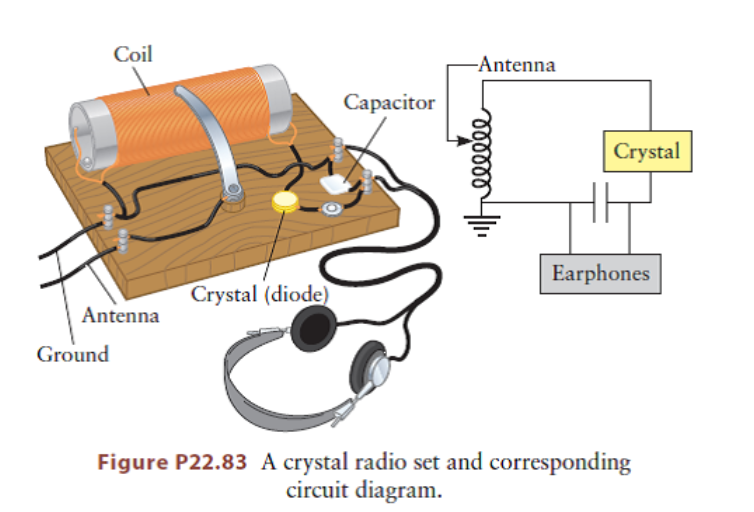
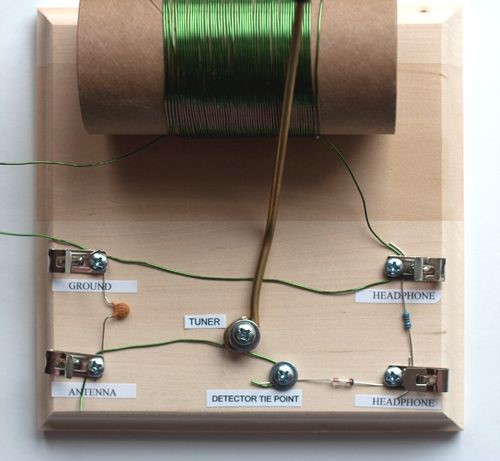
What puzzles me about crystal radios is how it works without a battery?
How does a Crystal Radio work without a battery?
Crystal radio set. The resonance phenomenon makes it possible to listen to AM broadcasts with a simple circuit and never need a battery. When a system is driven at its resonant frequency, even if by minute oscillations of current in the antenna, the resulting amplitude can be many times greater than the driving amplitude. The crystal radio, when tuned to a broadcast frequency, can produce a current large enough to operate an earphone speaker. A crystal radio is a simple LCR circuit with an antenna wire and a diode (the “crystal,” involved in separating the signal from the carrier wave for the earphone). Figure P22.83 shows an illustration and circuit diagram of such a radio. The LCR circuit is made to match the broadcast frequency by varying the inductance, in this case, by moving a wire to select how many turns of the solenoid are included in the circuit. (a) If the capacitance of the circuit is 950 pF, what inductance is needed to receive a broadcast at the highest AM frequency (1710 kHz)? At the lowest (520 kHz)? (b) The solenoid inductor’s windings are made on a cylinder 6.0 cm in diameter and 20 cm long. How many turns are needed to provide the maximum and minimum inductances to cover the full AM band range? (c) Calculate the number of windings per length of solenoid (turns per millimeter). (d) AM radio specifications mandate that stations are spaced 10 kHz apart. Will this solenoid have sufficient resolution to separate two stations? (What change in the resonant frequency is produced by including one more winding?).
Grandpa’s Grave (lyrics)
They’re moving father’s grave to build a sewer
They’re moving it regardless of expense
They’re moving his remains to lay down
Nine-inch drains
To irrigate some rich bloke’s residence
Now what’s the use of having a religion?
If when you’re dead, you cannot get some peace
‘Cause some society chap wants a pipeline to his
Tank
And moves you from your place of rest and peace…
Now father in his life was not a quitter
And I’m sure that he’ll not be a quitter now
And in his winding sheet, he will haunt that privy
Seat
And only let them go when he’ll allow
Now won’t there be some bleedin’ consternation,
And won’t those city toffs begin to rave
But it’s no more than they deserve, ’cause they had
The bleedin’ nerve
To muck about a British workman’s grave
Source: Musixmatch
Songwriters: Jody Gibson / Wally Whyton / Simon Depaul / Jessie Cavan
You can purchase Crystal Radio Kit sets. The one below is available in New Zealand.

One of my childhood memories:
I share a sketch of the radiogram I have used to listen to AM radio – Radio Lorenzo Marques (broadcasted to South Africa, Mozambique and Rhodesia) in the 1970s. A friend and I experimented with laying thin insulated copper wires from my house to his house. We connected speakers to both ends and could communicate with one another about 100 meters apart. As teenagers, we were thrilled with our success. We were able to create a simple, effective communication system. We felt like accomplished scientists and engineers! Below are my sketches showing the radiogram, the fence (wires were attached to the supports leading to my friend’s house) and the position of the 2 speakers. One speaker was placed at my house and one at his house.

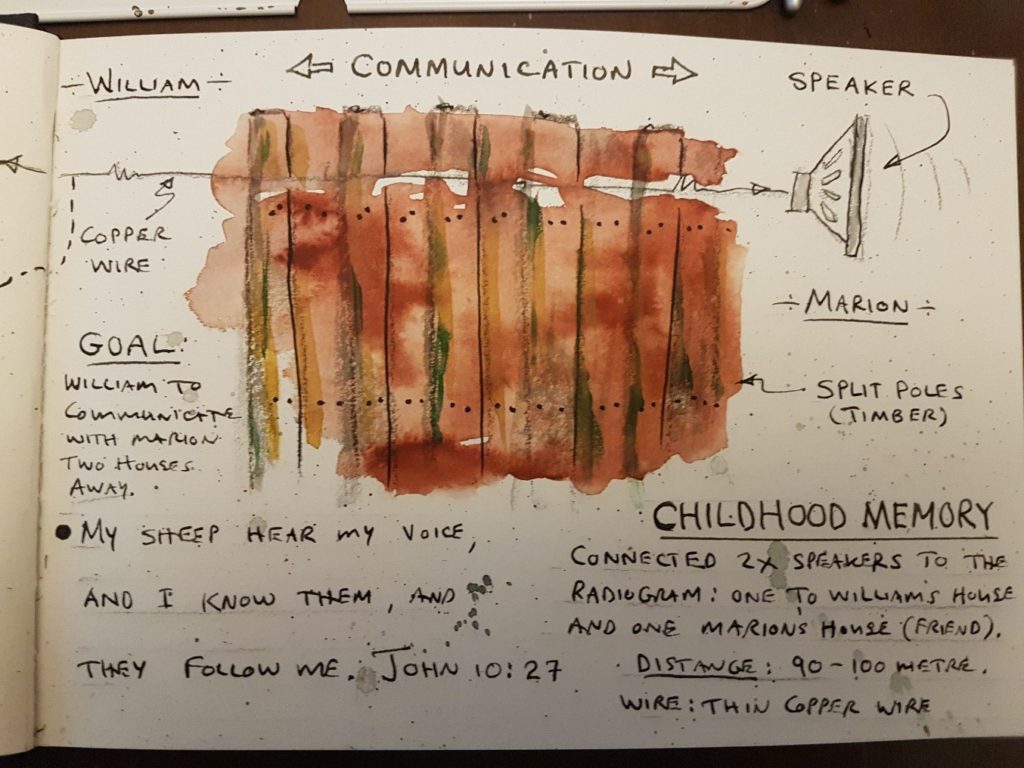
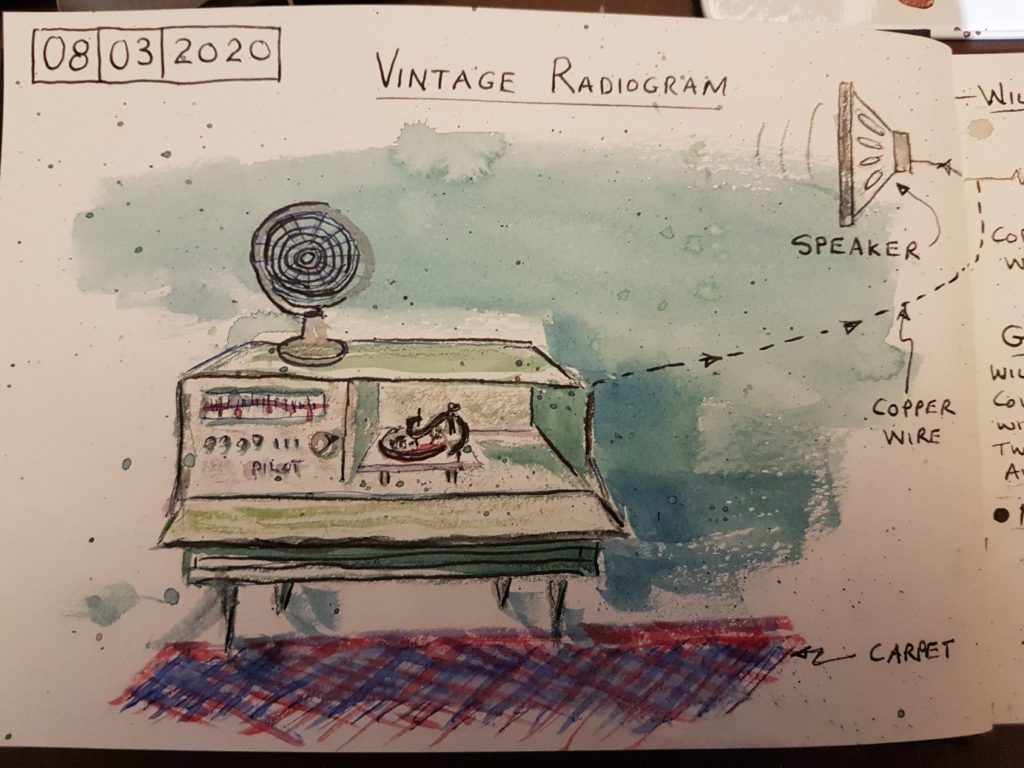
Read more about my childhood memories here: https://fivehousepublishing.com/2020/03/28/unique-childhood-memories-from-my-sketchbook-the-barbershop-a-vintage-radiogram-and-a-new-slot-car-set/
Lesson ideas for teachers:
Creating crystal radios and foxhole radios is an excellent lesson idea. Providing practical and theoretical opportunities to teach. It has so much potential for an amazing set of lessons: STEM, STEAM, science, maths, electronics, engineering, digital technology, broadcasting, communication, fiction, creative writing, history, and so much more!
Here is one such an idea: Minecraft Education.
COMMUNICATION CONUNDRUM
Students will create a “space language” using light, sound, or a pattern. This language will be used to communicate effectively with others.
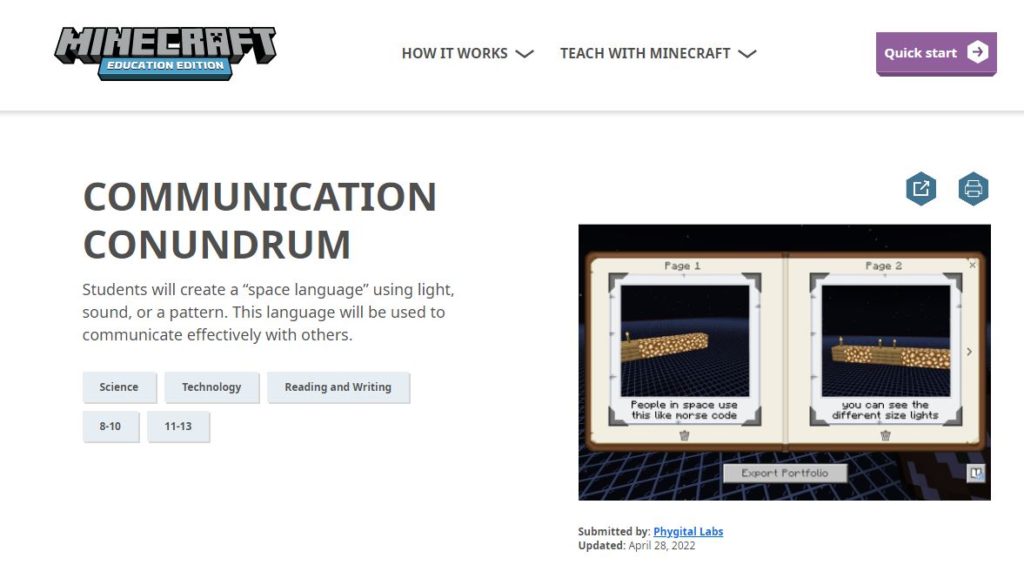
Updated: April 28, 2022. Minecraft Education.
COMMUNICATION CONUNDRUM
Learning Objectives
1. understand various ways of communicating using light, sound, or written patterns a. NGSS 4-PS3-2 b. NGSS 4-PS4-3
2. recognize the need for a basic language to communicate with those that do not speak in the same language as we do a. CCSS.R.7
3. design a device or create a new language/alphabet that can be used with others in space (human or otherwise…) a. NGSS 3-5-ETS1-1 b. NGSS 3-5-ETS1-2 c. NGSS 3-5-ETS1-3.
Credit: Phygital Labs.
Link to the lesson: https://education.minecraft.net/en-us/lessons/communication-conundrum
Here is another lesson: First World War (communication – Morse Code – radio signals):
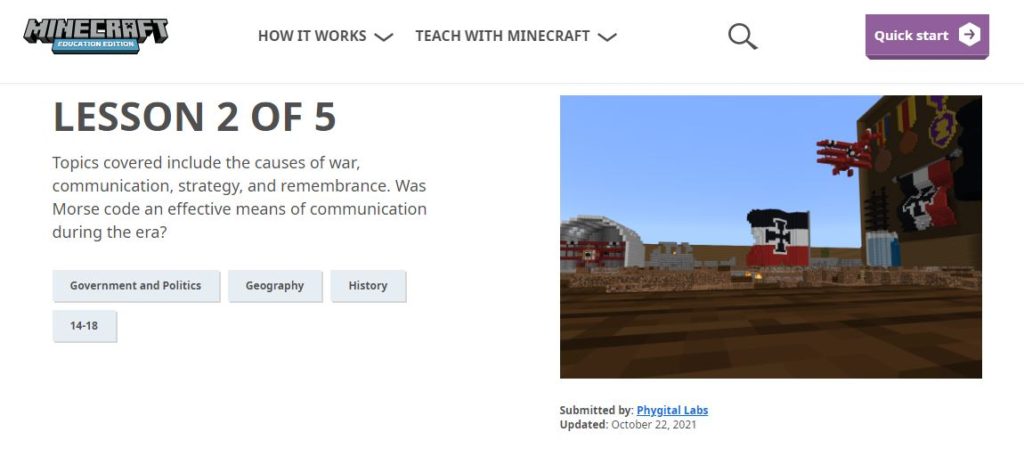
WORLD WAR I LESSON 2 OF 5
Learning Objectives:
Students will experience the difficulties and dangers of trench warfare.
Student will reflect on the lessons learned from war through visual art and narration.
Students will experience Morse code as the primary communication method of the era.
Students will understand how the introduction of airplanes changed war strategy and casualties.
Students will discover the causes, involved nations, and resolution to World War I.
Can you think of a cool lesson for students using Minecraft Education (or any other ideas)? Please share with me via the comment section. Thanks.
I include several links to cool videos on Crystal Radio Sets:
http://www.lessmiths.com/~kjsmith/cry… INTERESTING LINKS Air Core: http://www.circuits.dk/single-layer-a… OTHER CRYSTAL RADIO VIDEOS – A comparing 2 designs, one better than the other https://www.youtube.com/watch?v=i2PIT… – Crystal Radio Powering a Joule Thief https://www.youtube.com/watch?v=xn7U1… – Popular Crystal Radio Design That Does Not Work https://www.youtube.com/watch?v=i2PIT… – New Crystal Radio Design https://www.youtube.com/watch?v=ls-28… – World’s Simplest (Crystal) Radio https://www.youtube.com/watch?v=GdvKD… – Crystal Radio Improvements & Upgrades https://www.youtube.com/watch?v=Bfr9_… – Putting a Wood Knob On a Shaft https://www.youtube.com/watch?v=Po-uG… – Connect DC Amplifier to Crystal Radio https://www.youtube.com/watch?v=HOw3y…
Credit list: TS Brownie (YouTube)
Copyright © 2022 by William Van Zyl
Crystal Radio shortens Gravedigger’s night.
All rights reserved. This ebook/article or any portion
thereof may not be reproduced or used in any manner
whatsoever without the express written permission of the
publisher except for the use of brief quotations in a book review.
Published by Five House Publishing (New Zealand)
First Publishing, 2022

More eBooks and articles are available at https://fivehousepublishing.com/
More about the author at http://williamvanzyl.com/
Podcasts:
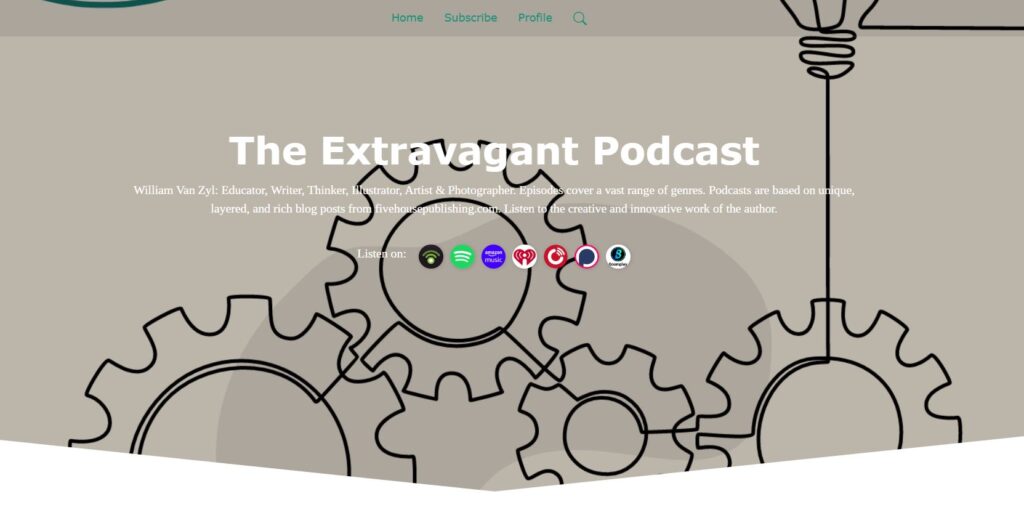
https://feed.podbean.com/williamvzyl/feed.xml
https://williamvzyl.podbean.com/